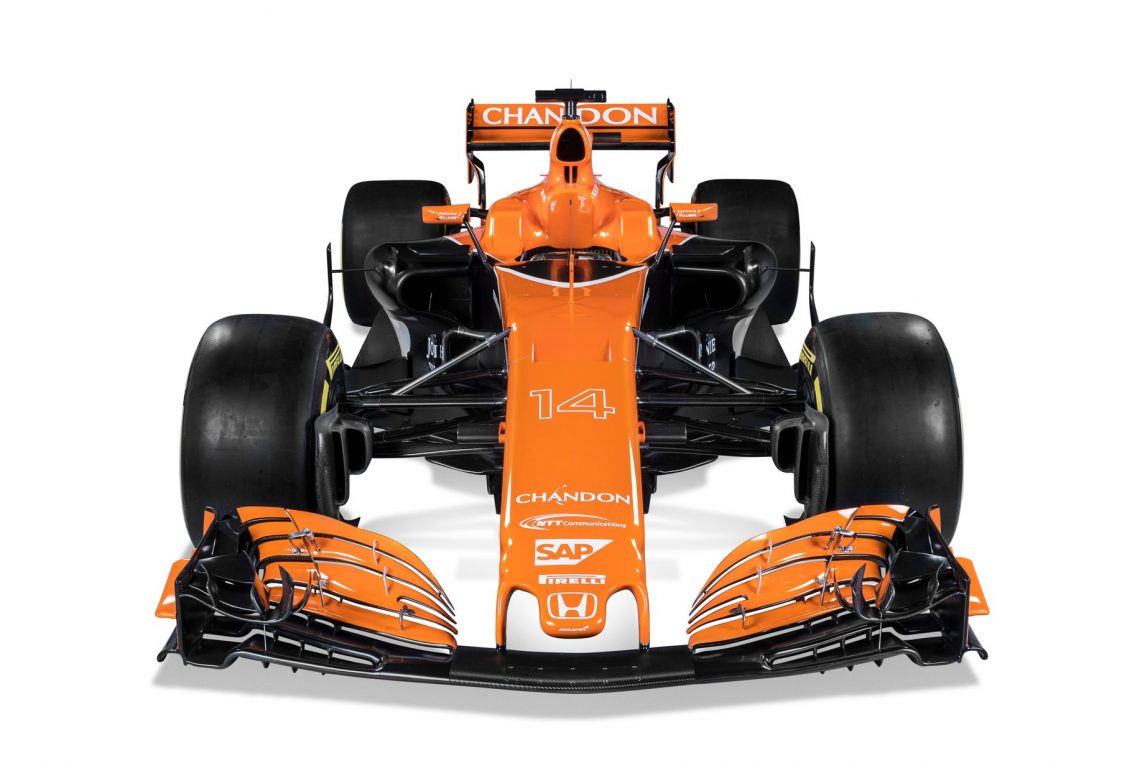- April 4, 2017
- No Comment
The Machines That Make McLaren’s F1 Racer

Celebrating 18 years of collaboration, McLaren and Yamazaki Mazak are continuing to make race car magic together. The racing legends are now able to manufacture even more of their parts in-house, making secret-squirrel technology more secret. And more squirrel.
Thanks to the recent rule changes in the sport, F1 racing teams are now having to build their cars longer, larger and stronger. This means that the carry-over of parts from the previous season is as little as 10% for many teams. Thanks to their Mazak machining centre, McLaren have been able to spend the winter building new parts, non-stop, rather than having to outsource the work; a timely and expensive operation. As McLaren’s machine shop and fabrication shop manager Malcolm Jones explains:
“This winter has been an incredibly busy one. For the MCL32, every single Mazak-machined part of the car has been changed from this season to last. In a normal winter, we expect about 70-80 per cent of the machined parts will be new – but this year it’s 100 per cent.”
Luckily, their machines are up to the task. Their 33 separate Mazak machines can work 24 hours a day, 7 days a week to manufacture the necessary parts. Back in the day, machining tools were generally operated by a one-to-one ration of man and machine. Now, thanks to automation and the advances in these kinds of machines, one operator can be working across as many as three machines at once. This represents obvious benefits for efficiency, especially considering the pressure that teams are under to re-work their builds to suit 2017 regulations.
Since moving the MTC (McLaren Technology Centre) in Surrey in 2003, McLaren have upped the ante on their manufacturing; breaking down lead times and keeping their not-insignificant racing secrets in-house. Reducing some 8-week turnarounds to a matter of hours has meant that their competitive edge is that much sharper.
“For uprights, for example, when we contracted them out, we’d have an eight-week lead time. Since we brought the production in-house, we can machine an upright in 24 hours, with a five-week total lead time for the part,” says Simon Roberts, McLaren racing director.

The Mazak Vortex five-axis vertical machining centre currently being used at MTC manufactures a single, 300kg piece of aluminium into a front-wing skeleton, to which carbon fibre skins are applied. This process has saved McLaren 75% on production time, when compared with their previous methods.
The newest additions to the MTC are a couple of Hyper Variaxis 5-axis machining centres, which boast enough power to machine not only aluminium, but titanium. Incorporating two of these beasts into the workshop allows McLaren to manufacture matching left and right sides of their components simultaneously.
Another 8 machines will soon be brought in, as the McLaren-Mazak contract is extended. These new additions will include:
- 3 x Vertical centre primos machines
- 4 x Vertical centre nexus 530c machines
- 1 x Quick-turn compact 300ml turning centre
Put simply, what this means for McLaren is that they are able to bring even more operations in-house. Since moving into the MTC, they’ve increased their on-site production by around 15 – 20%. Roberts would like to see this much higher, however, at this stage manufacturing with magnesium can’t be done at MTC due to insurance restrictions. Currently, McLaren’s axles are made by external parties, for example—but these will also be brought in-house thank to the capabilities of their new machines.
Engines and KERS (kinetic energy recovery system) have been previously made by Mercedes (until a few years ago, McLaren partnered with Honda for their engines) however around half of the rest of the 2017 car’s parts have been made internally. While McLaren prefer not to outsource components, due to current restrictions in machining and insurance, this is a necessary evil. However, as Mazak and McLaren continue to work closely together, less and less of this outsourcing will need to be done.
The bright orange 2017 McLaren MCL 32 model was debuted in February, and this season began last month Melbourne, with Ferrari and Mercedes taking out top honours. McLaren fell in at 13th and 14th place. Stay tuned for the rest of the season to see just what the MCL 32 can achieve for it’s team this year.






